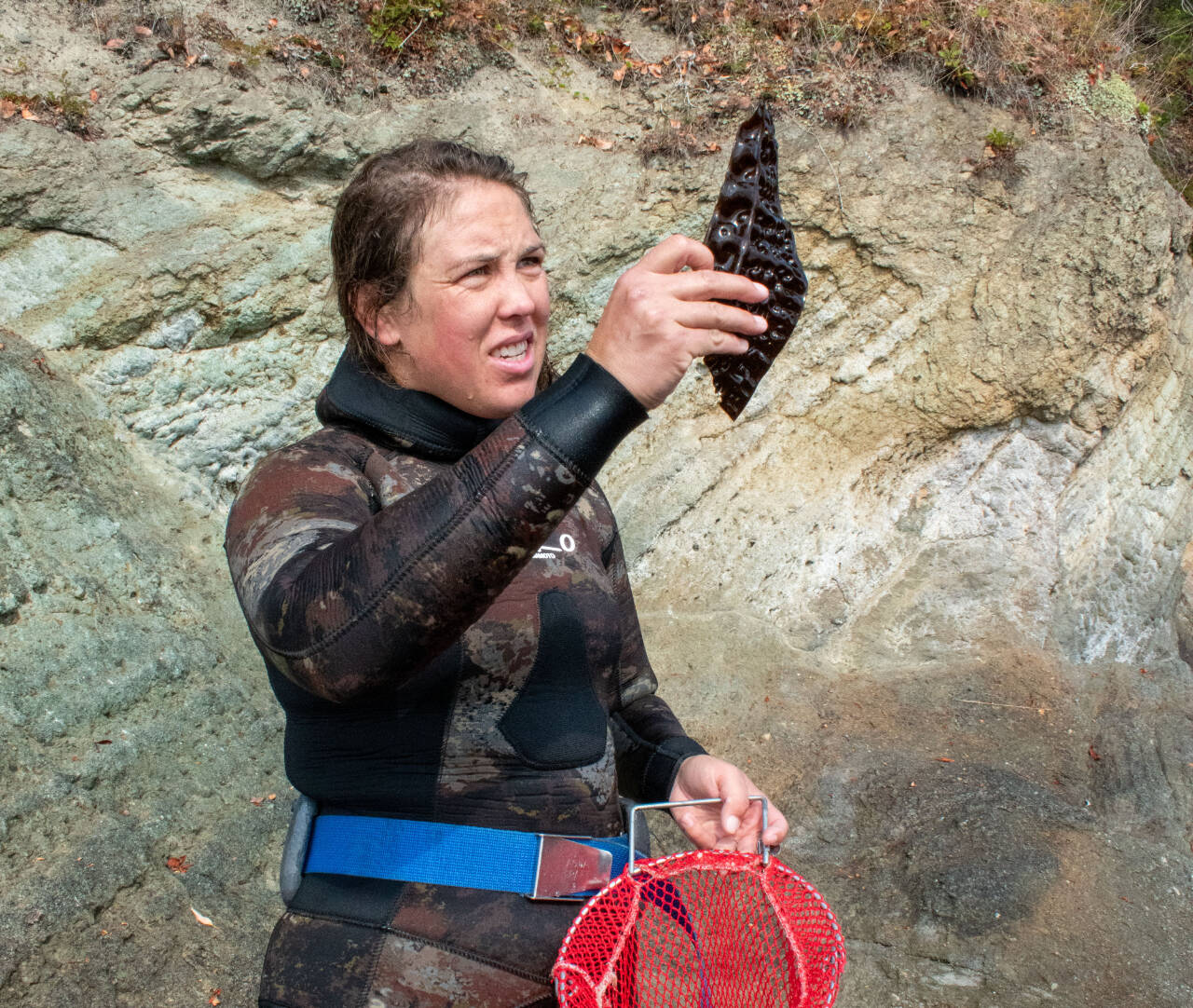Jamestown S’Klallam Tribe shellfish biologist Annie Raymond holds a piece of chocolate-colored kelp to the light, squinting to see if it has a patch of spores she can sample.
When she finds a section that looks darker than the rest of the kelp blade, she cuts it out, pats it dry and prepares to preserve the spores to germinate later.
The spores will be added to a regional seed bank in partnership with the Puget Sound Restoration Fund (PSRF) to prepare for a possible decline of kelp populations. Since 2022, scientists have been surveying kelp beds important to the tribe in the Strait of Juan de Fuca and developing the seed bank.
“Kelp are a critical piece of the nearshore marine ecosystem,” Raymond said. “We are taking inventory of what kelp are present and building a toolbox to address potential changes in kelp abundance in the strait.”
The seed bank has focused on bull kelp because it is a foundational species and provides habitat and food for many organisms in Puget Sound, said Aurora Oceguera, PSRF’s habitat lab technician.
“We’ve seen about an 80% decline in Puget Sound over the last 50 years or so and it’s affecting other organisms,” she said. “It’s a chain effect.”
After the tribe collects samples and sends them to PSRF’s lab in Kitsap County, the spores develop into male or female gametophytes in petri dishes. After four weeks, when the gametophytes are the size of a bell pepper seed, they are placed in the lab’s seed bank (a large commercial grade refrigerator) where they are kept in a suspended state in enriched seawater at a cold temperature, with short amounts of red light exposure that prevents growth but keeps them alive.
Bull kelp can grow from a tiny spore to 130 feet long in one year.
“Because of that rapid annual growth, we keep them in this suspended stage to develop our seed bank so we can preserve different bull kelp populations from around Puget Sound,” Oceguera said.
If kelp restoration in the strait is determined necessary 20 years from now, male and female gametophytes could be put back into optimal environmental conditions and grown to the size of a small plant, Raymond said.
The bank currently has 29 different populations, primarily bull kelp. This year’s research was expanded to add more species commonly found along the strait, including three-ribbed kelp and winged kelp, and learn about their reproductive mechanisms.
“There are a lot of stars that need to align to get these seed banks going, including finding fertile kelp in the wild and getting the kelp to cooperate in the lab,” Raymond said “It’s been a fun challenge and fantastic working with PSRF; they are really paving the way in this kelp bank work.”
This story was originally featured in the Northwest Indian Fisheries Commission’s Northwest Treaty Tribes and was used by permission. See nwtreatytribes.org for more information.


